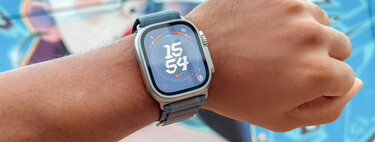I have been using an Apple Watch since the first model went on sale in Spain. During the first years I did not pay any attention to its abilities for our health. I didn’t do sports and didn’t know anything about things like heart rate.
Nine years later, my Apple Watch is much better able to convey valuable information about my health, and I am better able to understand it and put it into useful focus.
The problem. We have at our disposal small devices, not very expensive, capable of constantly collecting passive data about our health. There are ways to convert this flow of data into useful information and giving up on them is legal, but it is also missing something.
The solution. I discovered applications that made that conversion from raw data to easy-to-understand information. The one I’m using the most now is Bevel, formerly called Superset, among other reasons for its careful interface and rapid pace of updates. The highlights of Bevel:
- Recovery score. Based on our resting heart rate, heart rate variability, duration and quality of sleep and other indicators, it establishes a percentage score that summarizes our ability to face a new effort.
- Fatigue metrics. In the same way, it quantifies the effort load we carry throughout the day, and makes a comparison against our usual load.
- Stress. It is also capable of measuring it in an approximate way with a score from 0 to 100. And in my experience, it is pretty close.


From left to right: percentages of physical fatigue, recovery and sleep score. Image: Xataka, Mockup Nest.


Detail of the fatigue level per day. Image: Xataka, Mockup Nest.


Graph of the day with the stress level, also during sleep. Image: Xataka, Mockup Nest.
I can keep these metrics in view on the face of my Apple Watch. It is a way of understanding and remembering certain aspects of our physical state.
There are alternatives depending on each person’s priorities. Athletic for those who prefer to focus on data, or FitWoody for those who are just starting out with this type of apps and are looking for something less intimidating.
So that. These metrics help me quantify my stress and know when I am stopping underestimating it, or to know approximately what my level of physical recovery is in order to face a hard workout or if it is better to do it softer.
They also work very well as a detector that something is not going well. Sudden abnormal values can indicate things:
- A disease in the initial phase. It happened to me two years ago, when I got COVID, the first warning sign was seeing abnormal values in Athlytic, which I used at that time, before I even started to feel unwell.
- Altitude sickness. I had underrated it until I traveled from my city (twenty meters above sea level) to another one at 2,600 meters above sea level. An abrupt change that caused me a certain general discomfort. Athlytic also told me that something was happening.
Other apps. Beyond this style, other utilities are the app VO2 max, which simply lets you quickly see this last value, closely associated with physical fitness, on the watch face; either AutoSleepwhich monitors sleep very accurately and without requiring us to activate Sleep mode on the Apple Watch, something that the native solution still imposes but will disappear with watchOS 11.
Featured image | Xataka, Mockup Nest
In Xataka | I went years without tracking my sleep despite having a smartwatch. Now I understand its usefulness







![[Img #74133]](https://thelatestnews.world/wp-content/uploads/2024/10/Radio-signals-sent-between-TRAPPIST-1-planets-150x150.jpg)



![[Img #74133]](https://thelatestnews.world/wp-content/uploads/2024/10/Radio-signals-sent-between-TRAPPIST-1-planets-300x200.jpg)


Add Comment